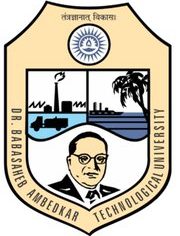Socio-Economically Disadvantaged Groups (SEDG) Cell
Introduction
Dr. Babasaheb Ambedkar Technological University (DBATU) recognizes the need for fostering an inclusive academic environment that addresses the challenges faced by students and staff from socio-economically disadvantaged groups (SEDG). In line with the principles of equity, justice, and inclusivity laid down in the UGC (Establishment of Equal Opportunity Cell) Guidelines, 2012, and the provisions of the Dr. Babasaheb Ambedkar Technological University Act, 2014, the university has established the Socio-Economically Disadvantaged Groups (SEDG) Cell. This statutory body is aimed at empowering individuals from underprivileged sections, ensuring they have equal opportunities to thrive academically, socially, and professionally.
Establishment and Legal Framework
The SEDG Cell is constituted under the authority of various Sections of the Dr. Babasaheb Ambedkar Technological University Act, 2014, which authorizes the university to establish committees to address specific institutional objectives. The cell operates in compliance with UGC regulations, functioning as a crucial body to address the barriers faced by disadvantaged groups, ensuring equitable access to education, resources, and opportunities.
Objectives and Mandate
The primary mandate of the SEDG Cell is to bridge socio-economic gaps by implementing targeted interventions and support systems. The key objectives are:
- Inclusive Participation: Ensuring equal representation of disadvantaged groups in academic and co-curricular activities.
- Capacity Building: Organizing workshops, skill-building programs, and career counseling sessions to empower students and staff from marginalized communities.
- Financial Assistance: Facilitating access to scholarships, grants, and other financial aids for economically weaker sections.
- Policy Advocacy: Advising the university on policies aimed at eliminating socio-economic disparities and promoting affirmative action.
- Grievance Redressal: Addressing complaints of discrimination or inequitable treatment faced by members of the SEDG.
Constitution of the Socio-Economically Disadvantaged Groups Cell
The composition of the SEDG Cell ensures balanced representation from academic, administrative, and external stakeholders. This multidisciplinary structure is designed to provide holistic support and oversight.
- Chairperson
- Faculty Representative
- Administrative Representative
- Student Representative
- External Expert
Key Functions and Responsibilities
- Awareness Campaigns: The SEDG Cell runs awareness campaigns to highlight the importance of socio-economic equity and the support available for disadvantaged groups.
- Support Programs: The cell initiates mentorship, peer support, and academic assistance programs to enhance the participation of SEDG students in mainstream activities.
- Data Collection and Analysis: The cell maintains records of the socio-economic background of students and staff to assess the effectiveness of interventions and suggest improvements.
- Outreach Activities: Partnering with local communities and organizations to identify potential students from disadvantaged groups and facilitate their enrollment.
- Policy Implementation: Monitoring the implementation of policies to ensure diversity and inclusion within the university.
Procedures and Mechanisms
- Identification of Beneficiaries: The cell identifies students and staff from socio-economically disadvantaged backgrounds through applications, surveys, and referrals.
- Grievance Redressal: The cell addresses grievances related to discrimination, resource allocation, or exclusion, with a resolution timeline of 30 working days.
- Collaboration: The cell coordinates with government and non-governmental organizations to implement welfare schemes and capacity-building programs.
- Monitoring and Reporting: The cell regularly assesses the effectiveness of initiatives and prepares reports for submission to the university administration and UGC.
Reporting and Compliance
In compliance with the Dr. Babasaheb Ambedkar Technological University Act, 2014, the SEDG Cell prepares an annual report summarizing its activities, outcomes, and policy recommendations. The key aspects of the report include:
- Number and demographic details of beneficiaries.
- Summary of financial assistance and capacity-building programs.
- Recommendations for enhancing equity and inclusivity.
This report is reviewed by the Academic Council and the Board of Governors before submission to the UGC, ensuring transparency and accountability.
Significance and Impact
The SEDG Cell is instrumental in realizing Dr. Babasaheb Ambedkar Technological University’s vision of inclusive education. By addressing the unique challenges faced by socio-economically disadvantaged groups, the cell creates pathways for upward mobility, empowerment, and holistic development. Its initiatives contribute to fostering a culture of equality and mutual respect within the university.
Conclusion
The Socio-Economically Disadvantaged Groups (SEDG) Cell reflects Dr. Babasaheb Ambedkar Technological University’s commitment to social justice and educational equity. Through targeted interventions and inclusive policies, the cell addresses systemic disparities and empowers individuals from marginalized sections to achieve their full potential.
This statutory report is submitted for the perusal of the University Grants Commission (UGC) and other concerned stakeholders, reflecting the university’s dedication to upholding constitutional values and fostering an inclusive academic environment.
